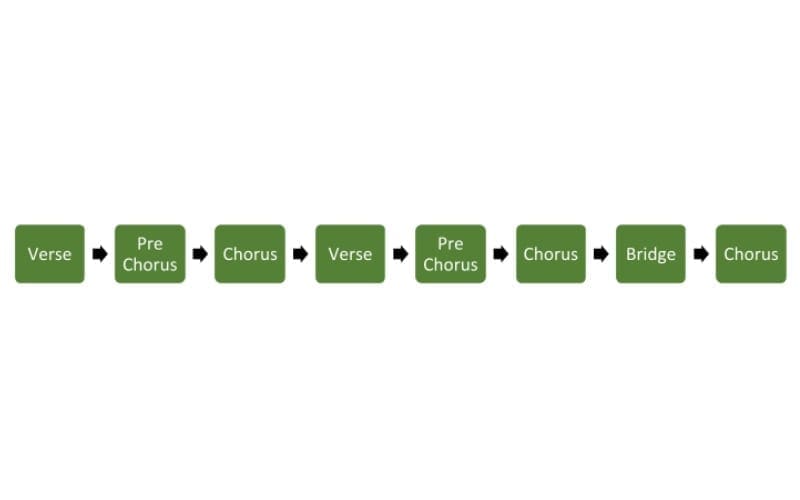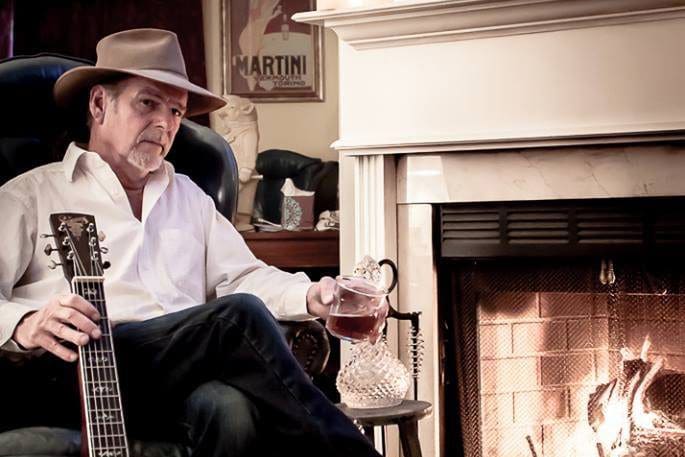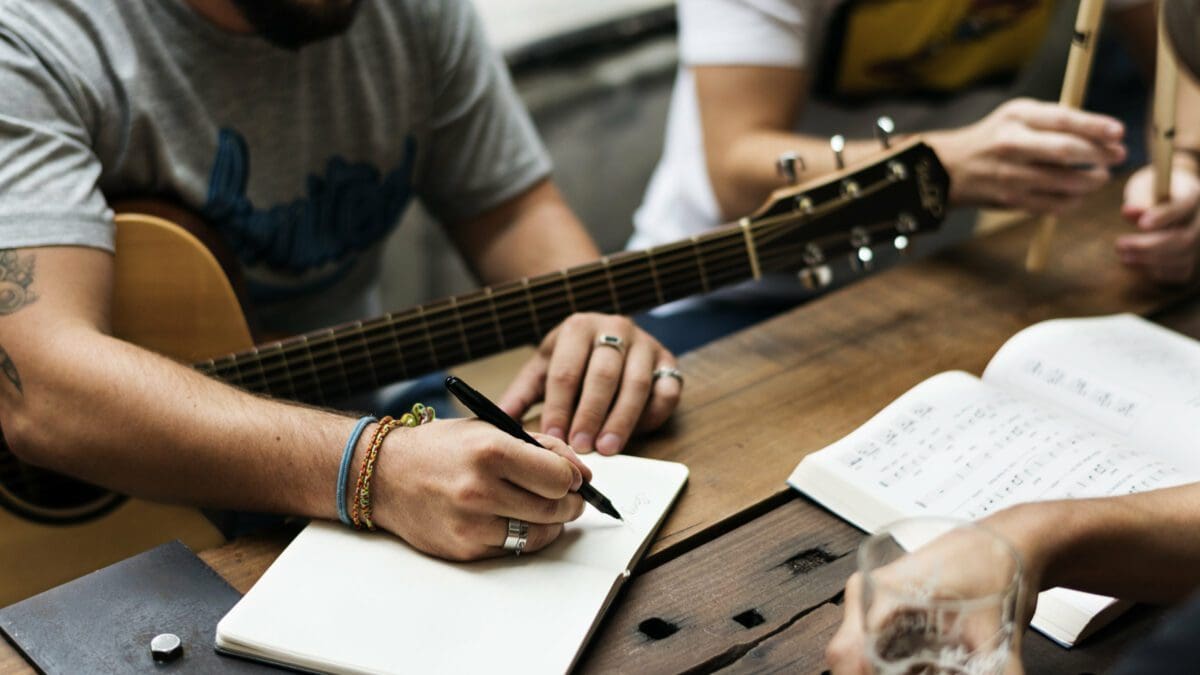Figuring out how to write a song can be tricky – after all, different people get creative in different ways. In this article, I will give you tips on how to write a song, looking at elements such as structure, how to write lyrics, hooks, song ideas/themes, and more. Read on to hear about different parts of the songwriting process, and get started on your first masterpiece!
Approaching Songwriting

Humming… is there anybody that doesn’t do it? Every artist initiated their career because they love music and want to make their own vision tangible. Every songwriter has hummed tunes that got molded into songs. Inspiration is helpful – but where do you go from there?
The stars of today writing songs doesn’t mean that they were born a pro; instead, they followed a pattern to construct their first-ever song and worked hard at their craft. Every artist has to follow a procedure in order to construct their string of words into lyric ideas, which group together to form a song.
So, we want to help you understand the best approach to songwriting, and give you trusted steps that help. The following seven steps will allow you to follow a sequence to get a breakthrough regarding writing and complete a song from start to finish.
So, what are you waiting for? It’s time to start!
Let’s Get Started How Do You Write A Song
The first thing required for anybody to write a track is to grab a pen or pencil and piece of paper, and start scribbling down ideas. There are also some great songwriting apps to help you keep track of these ideas, and play around with them.
You must be thinking ‘Why is it necessary to note down ideas, phrases, or strings of words?’ In most cases, nobody writes a song in one go. Lyrics come in episodes, and songs are made of a series of events that need to be noted down so that we don’t forget them.
In order to prevent your ideas from thinning into the air, it is essential that whatever crosses your mind is recorded or registered somewhere, so that you can proceed later on.
Another important thing to do is to always carry a recording device with you, either a mobile phone, a dictaphone recorder, or anything else that enables you to record things. Out of them, all, mobile phones make sense since we usually carry them everywhere anyway!
You never know when an idea can pop into your head. It could happen on the tube, at the gym, at work, or on a night out… so record lyrics, composition, and melody or hook ideas on your mobile phone.
The Theme Of The Song
There is a famous saying, ‘Every song has a story.’
This is one true fact that we, as listeners, often neglect. But to ask what comes first – a track or a tune?
Either can come first – whichever works best for you. Trying and testing different methods and starting points is a great way to see what works for you. Sometimes, even a title is what comes first!
Most artists, whether street musicians or Grammy award winners, frame their great songs on a certain story from their life, from personal experience. Nobody is born a professional artist, we tend to create chances for ourselves by innovating creative responses to things around us. In a similar manner, you need to be very transparent and fragile regarding the idea or theme of your song.
The idea can be inherited from any real-life scenario, whether it is about mystified nature, past life experience, anticipation… literally anything. In order to connect with your listeners, you need to convey the message of your song in a clear cut manner.
Consequently, if you have just decided to write and compose songs and haven’t come up with an idea, there is no need to worry about it. Maybe take a walk and dwell upon different aspects that could help you to establish a song. Or, you could write about something that hasn’t happened from a 3rd party perspective – get creative and see what happens!
How To Write A Song For Beginners And Approach Writing Them

Once you have come up with a good idea or theme to frame your song upon, it is very important that you construct lyrics accordingly.
Setting up lyrics requires time and patience; rarely do words just flow into your mind smoothly and continuously. You need to shape it, sequence it, and repeat the series of steps until the stanza starts making sense.
One thing to consider is that your listeners will more naturally hook onto your songs if you use catchy phrases or words. Modern artists tend to make their songs rhythmic by using rhyming words, making it easier for the audience to learn and sing by heart. This is just one example, though – it doesn’t always have to follow this pattern.
Even if you have come up with a series of stanzas that don’t rhyme at all, you don’t need to squeeze in unnecessary changes. Maybe Google some rhyming synonyms or acronyms which fit into the place, and proceed onward. Otherwise, just stick to the plan since it is a good idea to stand out in the crowd.
How To Write A Pop Song – Setting Up The Song Structure
As an amateur songwriter, you need to be familiar with important musical terms in order to add structure to your song.
Without getting accustomed to these musical terms and music theory, progression could seem useless and pale. There are a bunch of terms that are broken down below so that you can strategize your song structure.
Components Of How To Write A Song

The following are the main building blocks of how to write a song:
The Verse
Typically, these series of sentences provide us with the theme or detail of the song’s subject. It is a passage whose melody leads its listener to the vibrant chorus. It is normally around 32 bars.
There are usually two to three verses in a song, and while all the verses will usually have a similar melody, you should change up the lyrics. You can arrange verses to build up a story so that it makes listeners hooked until the very end.
The Chorus (Hook)
The chorus is the part of a song which often contains the title. It usually both opens the song and follows the chorus, and is the catchiest part that people remember.
The chorus has been known to start on high and powerful notes and should be constructed in such a manner that gets people to clasp on the song.
You may also notice a lot of repetition in the chorus for this reason.
The Bridge
This is the most riveting part of the song. It usually differs both in melody and chord progression to bring contrast to the verse and chorus structure. The bridge tends to reel the listener in, getting them to crave the chorus.
This passage typically proposes the climax of the song, followed by either a verse or chorus to end the song.
Before penning down the bridge, make sure that it contains new and different lyrics, background score, and melody. This is so that it both forges a break for our ears, and also makes us long for something familiar.
While a usual verse, chorus, and bridge structure may be a tried and tested structure, why not experiment?. Try to tailor it to the song’s story, and think what musically could heighten certain lyrics and so on.
The Melody

The melody is the key element of your song. If you tend to read a piece of sheet music, the variation between pitches over time is termed a melody. You need to be very efficient when preparing a melody since it adds emotional elements to your song.
Certain parts that require more emotion would maybe work best with higher notes. Going from a lower range to a higher range from verse to chorus, for example, can also help amplify the chorus and create a sense of build-up. Check out our guide to the best cheap microphones to make sure that you start off in the best position!
Harmony And Chord Structure
Harmonies consist of two or more notes that come together, creating a beautiful concoction of sounds. These are simultaneous occurring notes in a stanza.
On a piece of sheet music, the up and down variation of pitches which are relative to one another is termed as ‘harmony’. A chord is when at least three pitches are harmonised or played simultaneously.
Many of today’s hit songs include generic chord progressions while layering over the melody on vocals and instruments – so this is a good strategy.
It is common practice to write melodies ahead of harmonies, so this can be a great way to build on your melody. You can put in higher or lower harmonies, which complement the melody at pivotal moments in the music. For example, harmonies on a specific lyric or musical moment will emphasize this, and highlight it.
Once you lay out a basic frame for your song, it is important to scrutinize it with add-ons to embellish the primary structure.
The Key
Also termed as ‘key signature’, the key is a collection of notes that acts as a tonal home for the song. Throughout a song, there can be key changes (the bridge or final chorus are good places to do this), but try to keep these minimal.
You don’t need to feel overwhelmed with the complex features of structuring a song – simply follow the basic theory and trust your instincts and ears!
The Hook
A hook is a small musical idea – whether a melody or even a guitar riff. People always remember this part because it’s designed to get stuck in your head.
Try to embed multiple hooks at intervals of high tension so that it adds interest to your song. Also, make sure to repeat any hooks in places like choruses to really embed the song into people’s minds this is vital when learning how to write a song.
Structure

As I have now established the basics of musical terms, you might be scratching your head as to how to frame them in your song. Well, this is where I can help!
I have deconstructed some of the finest tracks of famous artists to help you with a primary tune.
The rudimentary song structure looks somewhat like this:

The intro and outro can be added at the beginning and ending respectively.
As an example, who doesn’t love ‘Shake It Off’ by Taylor Swift? This party song is on 2 billion+ Youtube views, and still, people groove to it every day. The tingling composition and infectious rhythmic beat make you want to get on your feet and shake it off too! Let’s deconstruct this masterpiece structure for a better understanding:
At the end of the bridge, the artist starts the chorus with a high note so that the anticipated beat is heightened. The song has the repeated ‘Shake It Off’ hook (which also makes the title memorable), and the chorus also has a lot of repetition.
More On The Structure
Not every artist tries to follow the same pattern, for example, Dua Lipa’s ‘New Rules’. The popular track utilizes the reinvention of the hook. A single line from a chorus leads its way into a whole new stanza that contains a repetitive hook to get you singing along. These are just examples of how to write a song, and it doesn’t matter if what you choose to do deviates from the fundamental structure.
What really clicks is your story, your arrangement, your lyrics, and your hook – the order is up to you. Bear in mind that a song shouldn’t be too long or have too many repeating parts (i.e. seven verses may be a little steep). Your listener shouldn’t get bored after just a few listens – you want your song to be timeless!
How To Write A Rap Song
There are some good tips on how to write a song, here’s one of them! Writing a rap song can be a creative and rewarding experience. To get started, come up with a concept or theme for your song. Next, brainstorm ideas for lyrics and write down any rhymes or phrases that come to mind. Once you have a good collection of ideas, start to arrange them into verses and choruses. When you have the basic structure of the song in place, it’s time to add some musicality. Choose a beat or instrumental to accompany your song and practice rapping over it. Finally, record your song and share it with the world!
The Production Phase And Your Options On How To Write A Song
As much as it seems achievable to create a song and release it to the world, the process is not so easy. As a rookie artist, it is more feasible for you to reach out to those mystical, magical creatures known as Music Producers.
What Are Music Producers And Where Can You Find Them?

Music producers are artists and creators that can add so many more dimensions to your tune. They can help you define your genre and musical style, compose your tracks, co-write with you, and even assist you in publishing or sharing it.
Make sure to protect your intellectual property because you would not want your work to be done in vain. Copyrights, trademarks, and publishing rights need to be protected and recognized under your banner.
Before you start hunting for a music producer, try to develop an understanding of how you want the production to sound. Do you need a producer that is great with electronic elements? Somebody that can help you co-write or work on some parts? All of the above? There are also plenty of recording studios or services that can help to produce part or all of your songs.
You can, of course, begin learning how to produce music yourself – it just depends on the time frame you have before you want to release and if you think you could do it justice with some practice!
How To Write A Song Using Songwriting Inspiration
It is not entirely necessary to be fond of songwriting to lay out a track; sometimes you can gain inspiration this way and watch the track unfold. You could also approach songwriting differently, for example having a track that you then write a melody to, much like toplining. Band-in-a-Box is perfect for this, as it helps you to create backing tracks and instrumentals.
All you need is to stay focused and determined towards your objective, and you will get there. The more songs that you write, the better they will be and the more confident you will feel. So, keep going!
Now You Know How To Write A Song!
Once you have written a track – why not ask family and friends for suggestions and feedback on your lyrics or melody? This could end up being really useful, and their outside perspective could unearth things you hadn’t even thought of!
Alternatively, you can use online services and paid applications to sort out the composition, track, and other features for you. Essentially, if you want to know how to write a song, just start writing it! practice makes perfect, and it is important to try different approaches to find your own style. Once you have hit your groove… there will be no stopping you! If you would like even more tips, head here.










